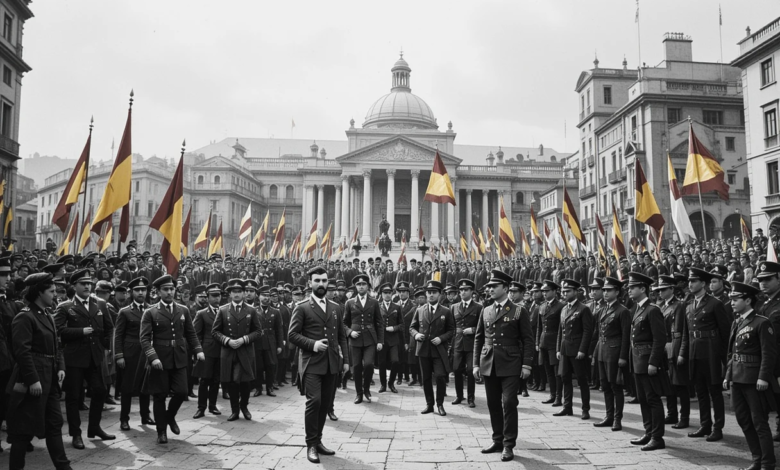I República: Spain’s Historical Milestone

The “I República,” or the First Spanish Republic, is a pivotal moment in the history of Spain. It represents a period marked by political unrest, ambitious reforms, and a search for identity within the country’s political framework. The I República lasted for a mere 11 months, from February 11, 1873, until December 29, 1874, but during this brief span, it left a lasting impact on Spanish society, politics, and the very structure of governance. You know about theglobespot. You know about i republica.
The Beginnings of the First Spanish Republic
The I República came into existence during a time of intense political turmoil in Spain. The country had just emerged from a series of military defeats and civil wars, the most recent being the Third Carlist War, which had caused further instability. King Amadeo I of Spain, the Italian prince who had been crowned as king of Spain in 1871, found himself unable to gain the support of the Spanish people or the political establishment. Amid growing discontent, King Amadeo I abdicated in February 1873, leaving the country without a monarch. You know about i republica.
In the absence of a monarch, Spain’s political forces turned to republicanism, which had been gaining traction in various parts of the country. The republican factions, which had long pushed for the abolition of the monarchy and the establishment of a republic, found the opportunity to form a government. On February 11, 1873, the Spanish Cortes (parliament) declared the First Spanish Republic. You know about i republica.
The Struggles of the I República
While the I República began with much enthusiasm, the country’s leaders quickly found themselves facing overwhelming challenges. The republicans had differing visions for what the new Spanish Republic should look like, and this ideological division led to instability. There were debates over whether Spain should adopt a federal or unitary system of government, with some republicans advocating for greater autonomy for Spain’s regions, while others wanted a more centralized government.
Moreover, Spain was still reeling from the effects of war and civil unrest. The Carlist Wars, the economic difficulties, and widespread political corruption made it difficult for the fledgling republic to function effectively. The republicans were also divided over the question of whether to continue the war with the Carlists or negotiate a peace settlement. These divisions, combined with the country’s chronic instability, made it difficult for the new government to maintain any sense of unity.
Key Events During the I República
Despite its brief existence, the First Spanish Republic saw significant developments. One of the most notable was the establishment of several progressive reforms, particularly in the areas of labor rights, education, and regional autonomy. For instance, a proposal for universal suffrage was put forward, although it was never fully implemented. In addition, efforts were made to implement more democratic systems of government and to address the longstanding social inequality in Spain.
However, the republic’s most significant challenges came from outside forces. The Carlist uprising, which had been a major problem during the final years of King Amadeo’s reign, continued to threaten the stability of the republic. In addition, Spain was facing unrest in its colonies, including Cuba, where independence movements were gaining strength. The republicans were unable to manage these challenges effectively, and their efforts to maintain order were increasingly undermined by the mounting chaos in the country.
The Fall of the First Spanish Republic
The First Spanish Republic’s fall came in late 1874 when General Martínez Campos led a military coup that restored the monarchy under Alfonso XII. The coup marked the end of the I República and the beginning of the Bourbon Restoration, a period of monarchy that would last until the early 20th century.
Despite its failure, the I República is remembered for its ambitious ideals and its attempts to create a more democratic and progressive Spain. The period may have been short-lived, but it marked a significant shift in Spanish political history and paved the way for later republican movements in the country.
Legacy and Influence
Although the First Spanish Republic ended in failure, its legacy can still be felt in Spanish politics today. It was an important milestone in the country’s journey toward greater democracy and political reform. The challenges faced by the I República, particularly the division between federalists and unitary republicans, would continue to shape Spain’s political landscape for decades. You know about i republica.
Furthermore, the I República set the stage for future republican movements in Spain. The Second Spanish Republic, which was established in 1931, would follow nearly six decades later, and its legacy is still remembered in modern Spain, particularly in the context of Spain’s transition to democracy after the Franco dictatorship. You know about i republica.
Conclusion
The I República was an ambitious yet ultimately doomed attempt to establish a republic in Spain. Although it was short-lived, it played an important role in shaping the country’s political future. The challenges faced by the First Spanish Republic, particularly the divisions between political factions and the external pressures on Spain, make it a fascinating chapter in the country’s history. The legacy of the I República is felt even today, as Spain continues to grapple with the balance between its regional autonomy and centralized government, as well as its ongoing quest for democratic ideals.

